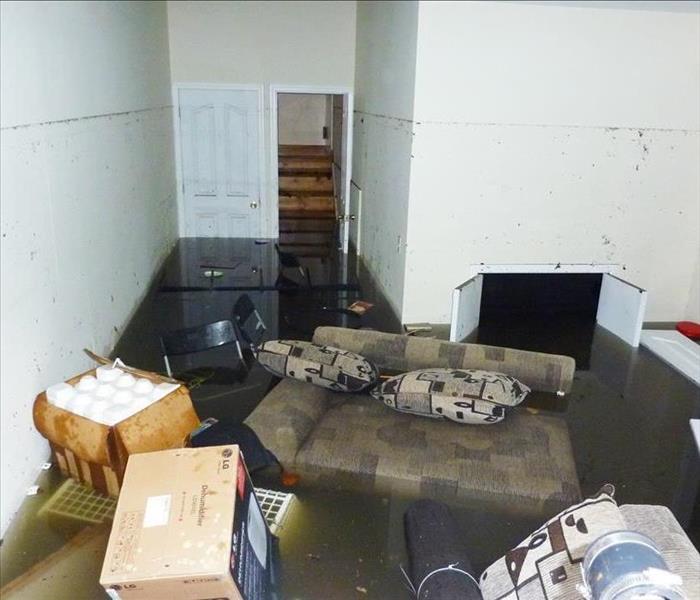Fixing a Basement Flood in 3 Steps
10/8/2018 (Permalink)
Sometimes you do all the right things to prevent a flooded basement, but it still happens. This is often due to extreme weather or a mechanical failure with the sump pump. Basement flooding is a big job that needs your immediate attention. Though it is a lot of work, it comes down to three key steps:
1. Be safe
Electrical shock is the biggest, most immediate risk to your health when you have a basement flood. Once water is in contact with live electricity, you cannot enter or even touch the water. Be sure to have the electricity (and gas) to your property turned off if the water in your basement is high enough to reach electrical outlets or other appliances.
2. Remove water
Once the electricity to your property is turned off, you need to remove all the water from the basement flood. It’s ideal to have the water pumped, so the job can be done as quickly as possible. If you are waiting for professional help to arrive, go ahead and use any resource you can to start water removal. Materials begin to break down quickly in water, and mold can even start developing in the first 24 to 48 hours.
3. Clean and restore
Building materials that are below the flood line are going to need to be removed and replaced. This may include subflooring, carpet pads, and wallboard. Electrical outlets and wiring that have been submerged should also be replaced. Carpet damaged from a basement flood of Category 1 water may be saved and dried outdoors. Wallboard above the flood line may also be saved.
Don’t assume flood damage in Vancouver, WA, is included under your insurance coverage. Water damage is a complicated claim, and it’s typically not covered if the damage is from a weather-related event. Sudden and unexpected floods from pipe or line failures are typically covered; however, not if the damage is due to the neglect of a leaky pipe that had been ignored.






 24/7 Emergency Service
24/7 Emergency Service
